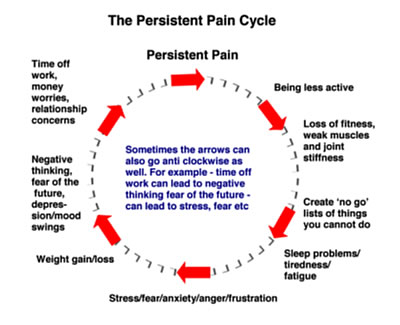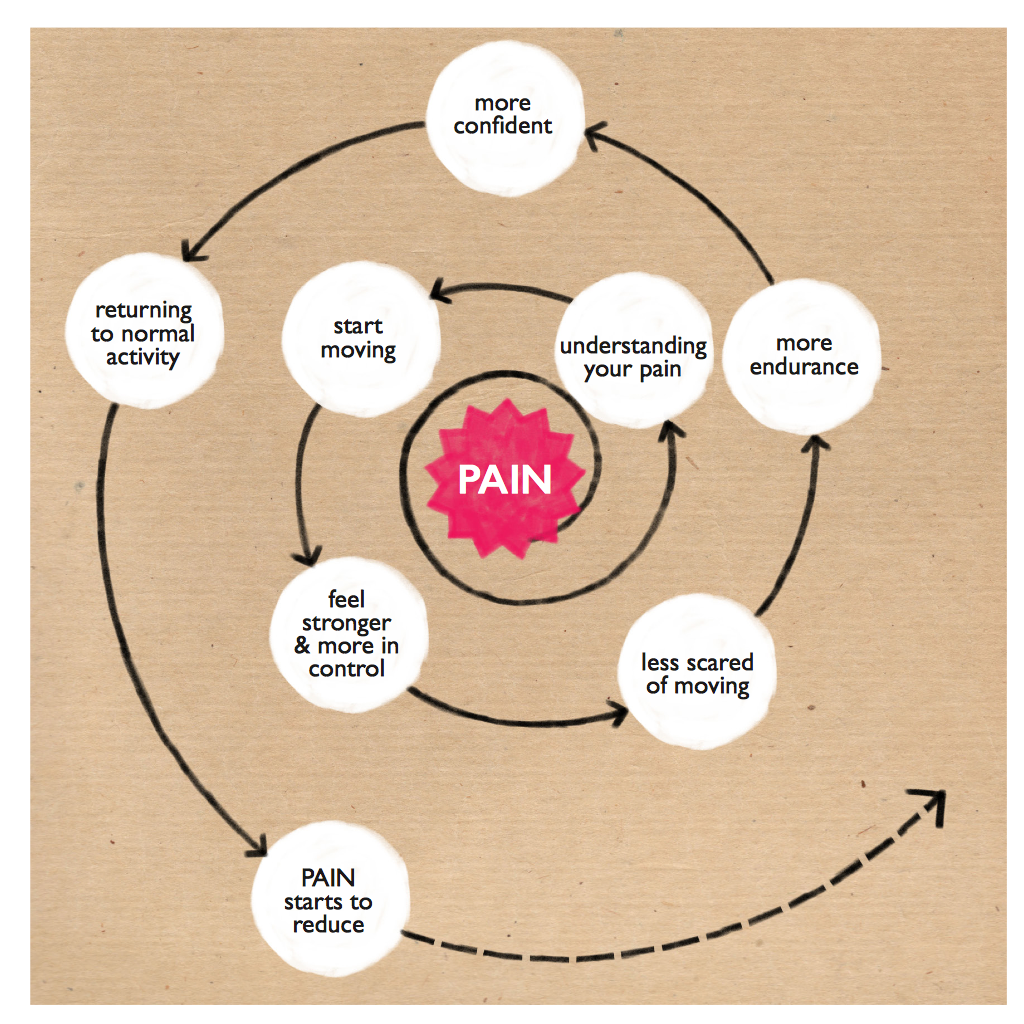Persistent or Chronic Pain
Persistent pain or chronic pain, is pain that continues to persist after an injury has healed, and/or has no known physical cause. It has been very challenging for healthcare professionals to find solutions to persistent pain.
Researchers all over the world have been re-examining pain and changing the way health care professionals think about and treat persistent pain. The old way we thought about pain could not explain the symptoms people experience in the absence of major tissue damage.
Understanding your pain can change how much it hurts. How you think about pain can change how it feels. Pain is a protector; when we feel pain (i.e. after touching a hot stove), we learn to change our behavior to avoid injury. Pain can also allow us to rest and give our tissues time to recover (i.e. after a muscle strain playing a sport). But, sometimes pain is not helpful, like phantom pain in a limb that has been amputated. How can a body part hurt if it no longer exists? Your body learns pain. There are specific neurons in your body’s tissues that respond to painful stimuli (like a strained muscle). When activated, they send signals through the spinal cord up to your brain. The brain takes that signal and uses information from your environment, and information stored from previous experiences, and determines if the stimuli is threatening.

This activity is called nociception, and it happens constantly, often not resulting in pain. If the brain perceives the signal as a threat, your brain makes pain. The longer your nervous system experiences pain, the better it can get at producing it and sometimes your brain can make pain in the absence of any physical stimuli or tissue damage. Thoughts and places can begin to stimulate inappropriate warning signals, and the pain feels exactly the same. This sensitivity of the brain and spinal cord is termed central sensitisation.
How do you know when your nervous system is sensitised? These few simple questions may provide an answer:
Does your pain spread?
Does your pain come on without warning?
Does your pain change quickly with your mood?
Are you more sensitive to touch, sound, light?
Have you been diagnosed with any of the following: restless leg syndrome, fibromyalgia, chronic fatigue syndrome, irritable bowel syndrome (IBS), chronic migraines, TMJ disorder, depression, anxiety and/or panic attacks?
If you answered yes to any of these questions, your nervous system may be sensitised.
So how can we treat persistent pain?
There is no one-size-fits-all, pain is very personalized. Many people with persistent pain already have a multitude of coping strategies carefully developed with their health care providers. But the pain never goes away completely. It is time to focus on re-training the pain system. To do this it means testing yourself physically and emotionally. Being honest about your thoughts and beliefs about pain and how they might be contributing to it.

Below is a link to a great website that can help you to better understand your pain and get you back on track.
https://www.tamethebeast.org/#home
The team at Fitness Physio understands persistent pain is up to date on the most recent research and we are here to help.
Recommended Reading
Explain pain by David Butler & Lorimer Moseley








